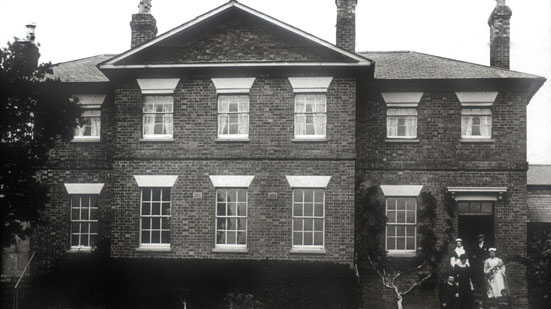On the site of Southam Primary School in Welsh Road West, Southam, there once stood a red bricked and imposing Victorian building known at the time as Southam Union Workhouse. Built in 1837, its construction’s origins began as early as 1834.
The Southam Poor Law Union was formed and plans were made for a new building to be overseen by the elected, twenty-six strong Board of Governors representing its nineteen constituent parishes. The population within the Union was 9,907 in 1837 when the workhouse opened. Today, Southam alone has a population of over 9,000, without including the surrounding 19 parishes!
The 1830s in Britain were a troubled time for the country. Depression had hit the industrial north, thousands were rendered homeless as they had lost their jobs; crops were ruined by a series of weather events; cholera was killing tens of thousands of people; riots, arson and chaos threatened the country with civil unrest. Before 1834, the cost of looking after the poor was growing more expensive every year. These costs had been legislated for, with the onus for paying them having fallen largely upon the middle and upper classes in each parish through their local taxes. This gave rise to a real suspicion among these classes who felt that they were paying the poor to be lazy and avoid work.
In 1777, a parliamentary report recorded that Southam had a parish workhouse able to accommodate up to twenty inmates. This became the Southam House of Industry, situated on the land of what was to become the Southam Union Workhouse in 1837. In 1797 there were ten paupers recorded as resident. The institution was characterised by its ‘cottage industry’ focus of weaving, where the inmates would prepare spun yarn of materials such as wool, linen and cotton.
In 1777 Napton also had a workhouse with twenty inmates recorded. All work carried out by the paupers was, of course, unpaid. During these years, individuals in the workhouses could be ‘farmed out’ to a contractor who received a weekly payment of 2s 9d for each pauper’s board and lodging, quite often to help with farm work.
The new workhouse plan followed the ubiquitous cruciform or square design with accommodation wings emanating from a central hub dividing the site into separate yards for the different classes of inmates: old, young, male, female. Under the Poor Law Amendment Act 1834, the prospect of being placed in the workhouse was intended to act as a deterrent to the able-bodied pauper, and poor relief would only be granted to those desperate enough to face the squalid conditions therein.
During the 1920s the harshness of the treatment suffered by workhouse inmates led to a gradual move away from this policy. Southam Workhouse closed, and in 1923 the Rural District Council accepted a tender of £1,240.00 from the Southam builder F.G.Watson for converting the premises into Council apartments called ‘The Dwellings’. These were demolished in 1968 and the Primary School was built there.
If you would like to find out more about the Workhouse, Southam Heritage Collection has an exhibition about it in Tithe Place until the end of May.
Southam Heritage Collection is located in the atrium of Tithe Place opposite the Library entrance. We are open on Tuesday, Thursday, Friday and Saturday mornings from 10am to 12 noon. To find out more about Southam’s history, visit our website www.southamheritage.org.uk, telephone 01926 613503 or email southamheritage@hotmail.com You can also follow us on Facebook.


Leave A Comment